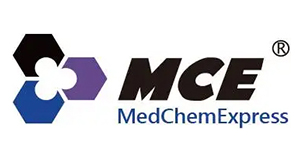Glutamine Metabolism Compound Library
Glutamine Metabolism Compound Library
SKU
MEXHY-L064-2x100
Packaging Unit
2 x 100 μl
Manufacturer
MedChemExpress
Availability:
loading...
Price is loading...
Description: Glutamine is an important metabolic fuel that helps rapidly proliferating cells meet the increased demand for ATP, biosynthetic precursors, and reducing agents. Glutamine Metabolism pathway involves the initial deamination of glutamine by glutaminase(GLS), yielding glutamate and ammonia. Glutamate is converted to the TCA cycle intermediate α-ketoglutarate (α-KG) by either glutamate dehydrogenase (GDH) or by the alanine or aspartate transaminases (TAs), to produce both ATP and anabolic carbons for the synthesis of amino acids, nucleotides and lipids. During periods of hypoxia or mitochondrial dysfunction, α-KG can be converted to citrate in a reductive carboxylation reaction catalyzed by IDH2. The newly formed citrate exits the mitochondria where it is used to synthesize fatty acids and amino acids and produce the reducing agent, NADPH.
Glutamine is an important metabolic fuel that helps rapidly proliferating cells meet the increased demand for ATP, biosynthetic precursors, and reducing agents. Glutamine Metabolism pathway involves the initial deamination of glutamine by glutaminase(GLS), yielding glutamate and ammonia. Glutamate is converted to the TCA cycle intermediate α-ketoglutarate (α-KG) by either glutamate dehydrogenase (GDH) or by the alanine or aspartate transaminases (TAs), to produce both ATP and anabolic carbons for the synthesis of amino acids, nucleotides and lipids. During periods of hypoxia or mitochondrial dysfunction, α-KG can be converted to citrate in a reductive carboxylation reaction catalyzed by IDH2. The newly formed citrate exits the mitochondria where it is used to synthesize fatty acids and amino acids and produce the reducing agent, NADPH.
Cancer cells display an altered metabolic circuitry that is directly regulated by oncogenic mutations and loss of tumor suppressors. Mounting evidence indicates that altered glutamine metabolism in cancer cells has critical roles in supporting macromolecule biosynthesis, regulating signaling pathways, and maintaining redox homeostasis, all of which contribute to cancer cell proliferation and survival. Thus, intervention in glutamine metabolic processes could provide novel approaches to improve cancer treatment.
MCE owns a unique collection of 903 compounds targeting the mainly proteins and enzymes involved in glutamine metabolism pathway. Glutamine Metabolism compound library is a useful tool for intervention in glutamine metabolic processes.
MCE Glutamine Metabolism Compound Library can be supplied as pre-dissolved Solutions or Solid. For pre-dissolved solutions in this library, there are 886 compounds supplied in 10 mM solution, 15 compounds supplied in 2 mM solution and 2 compounds supplied in 3 mg/mL solution.
For pre-dissolved solutions, 10 mM for compounds with the solubility not lower than 10 mM, 2 mM for compounds with solubility between 2 mM and 10 mM, and 3 mg/mL for compounds with unconfirmed molecular weight and solubility not lower than 3 mg/mL.
Advantages:
Formulation: A collection of 903 glutamine metabolism compounds supplied as pre-dissolved Solutions or SolidSolution:886 compounds supplied in 10 mM solution,15 compounds supplied in 2 mM solution,2 compounds supplied in 3 mg/mL solution.
Layout: 96-well storage tube or 96-well plate: 1st and 12th column are left empty.384-well plate: the first two columns and the last two columns are left empty.Compounds with different concentrations or dissolved in different solvents will be put on separate plates.This way of layout may increase the number of plates because there could be three solvents and three concentrations. If you have other requirements, please let us know.
Container: 96- or 384-well Plate with Peelable Foil Seal; 96-well Format Sample Storage Tube With Screw Cap and Optional 2D Barcode
Glutamine is an important metabolic fuel that helps rapidly proliferating cells meet the increased demand for ATP, biosynthetic precursors, and reducing agents. Glutamine Metabolism pathway involves the initial deamination of glutamine by glutaminase(GLS), yielding glutamate and ammonia. Glutamate is converted to the TCA cycle intermediate α-ketoglutarate (α-KG) by either glutamate dehydrogenase (GDH) or by the alanine or aspartate transaminases (TAs), to produce both ATP and anabolic carbons for the synthesis of amino acids, nucleotides and lipids. During periods of hypoxia or mitochondrial dysfunction, α-KG can be converted to citrate in a reductive carboxylation reaction catalyzed by IDH2. The newly formed citrate exits the mitochondria where it is used to synthesize fatty acids and amino acids and produce the reducing agent, NADPH.
Cancer cells display an altered metabolic circuitry that is directly regulated by oncogenic mutations and loss of tumor suppressors. Mounting evidence indicates that altered glutamine metabolism in cancer cells has critical roles in supporting macromolecule biosynthesis, regulating signaling pathways, and maintaining redox homeostasis, all of which contribute to cancer cell proliferation and survival. Thus, intervention in glutamine metabolic processes could provide novel approaches to improve cancer treatment.
MCE owns a unique collection of 903 compounds targeting the mainly proteins and enzymes involved in glutamine metabolism pathway. Glutamine Metabolism compound library is a useful tool for intervention in glutamine metabolic processes.
MCE Glutamine Metabolism Compound Library can be supplied as pre-dissolved Solutions or Solid. For pre-dissolved solutions in this library, there are 886 compounds supplied in 10 mM solution, 15 compounds supplied in 2 mM solution and 2 compounds supplied in 3 mg/mL solution.
For pre-dissolved solutions, 10 mM for compounds with the solubility not lower than 10 mM, 2 mM for compounds with solubility between 2 mM and 10 mM, and 3 mg/mL for compounds with unconfirmed molecular weight and solubility not lower than 3 mg/mL.
Advantages:
- A unique collection of 903 glutamine metabolism -related small molecules for high throughput screening (HTS) and high content screening (HCS).
- Targets such as glucose transporter, glutamate dehydrogenase , glutaminase, c-Myc ,etc.
- A useful tool for glutamine metabolism research and anti-cancer drug discovery.
- Bioactivity and safety confirmed by preclinical research and clinical trials. Some inhibitors have been approved by FDA.
- Structurally diverse, medicinally active, and cell permeable.
- More detailed compound information with structure, IC50, and brief introduction.
- NMR and HPLC validated to ensure high purity and quality.
- All compounds are in stock and continuously updated.
Formulation: A collection of 903 glutamine metabolism compounds supplied as pre-dissolved Solutions or SolidSolution:886 compounds supplied in 10 mM solution,15 compounds supplied in 2 mM solution,2 compounds supplied in 3 mg/mL solution.
Layout: 96-well storage tube or 96-well plate: 1st and 12th column are left empty.384-well plate: the first two columns and the last two columns are left empty.Compounds with different concentrations or dissolved in different solvents will be put on separate plates.This way of layout may increase the number of plates because there could be three solvents and three concentrations. If you have other requirements, please let us know.
Container: 96- or 384-well Plate with Peelable Foil Seal; 96-well Format Sample Storage Tube With Screw Cap and Optional 2D Barcode
| SKU | MEXHY-L064-2x100 |
|---|---|
| Manufacturer | MedChemExpress |
| Manufacturer SKU | HY-L064-2x100 |
| Green Labware | No |
| Package Unit | 2 x 100 μl |
| Quantity Unit | PAK |
| Product information (PDF) |
|
| MSDS (PDF) |
|

 Deutsch
Deutsch




